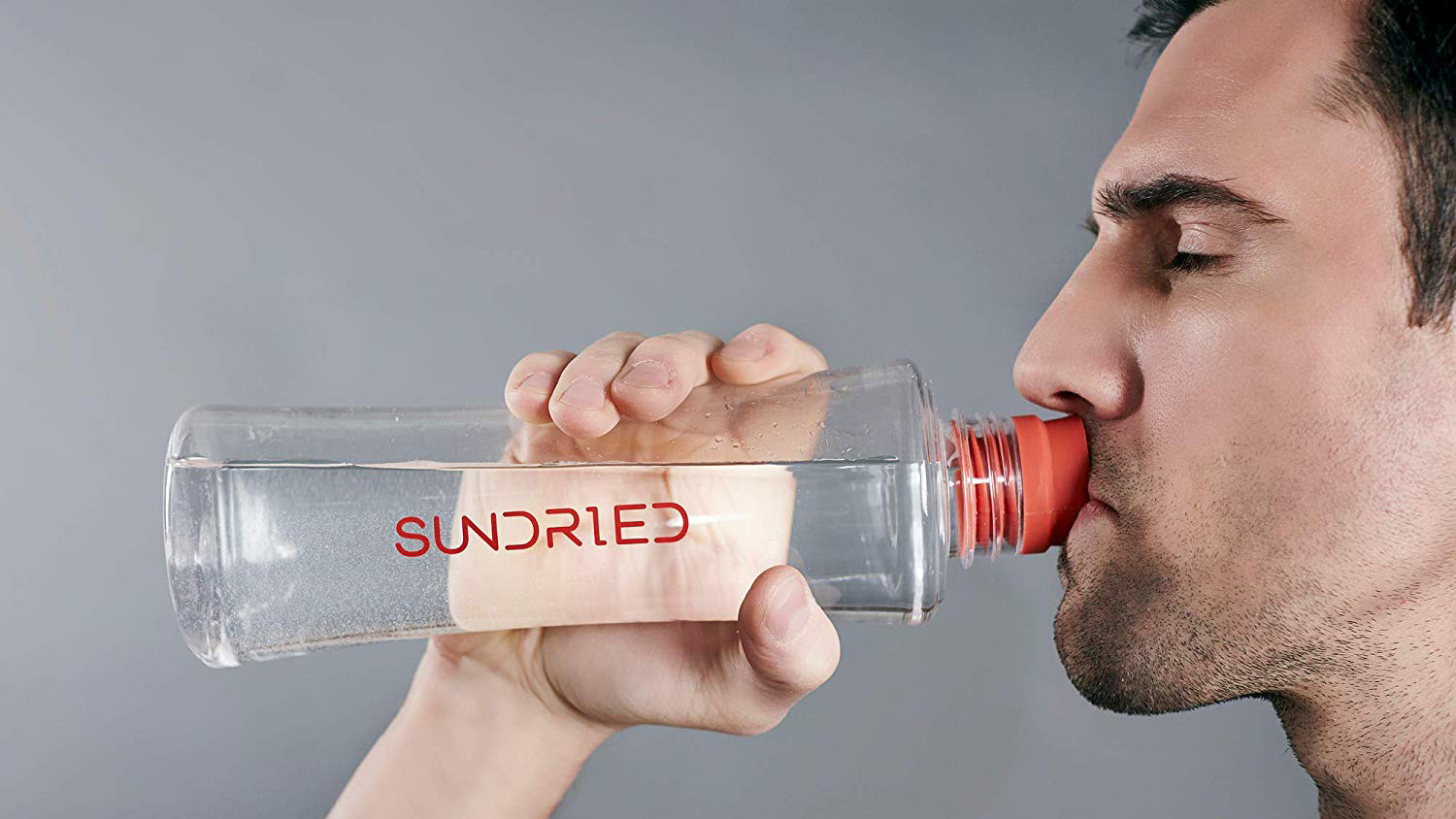Are reusable water bottles hygienic?
Everything you need to know to avoid germs and bacteria and keep safe while you hydrate


From some perspectives, a reusable water bottle is a no-brainer. After all, a million plastic bottles are bought around the world every minute and only half are recycled. According to the Refill app, it takes 162g of oil and seven litres of water to manufacture a single one litre disposable PET plastic bottle. It’s also likely that you need to drink more water, making a reusable water bottle win-win, surely?
Yes, but don’t forget about hygiene. Every time you drink from a water bottle you leave saliva on it, which contains germs and viruses, including the dreaded coronavirus, but plenty of other nasties, too.
Of course, you consider yourself a generally clean and healthy person – everybody does – but here’s what you need to know about reusable water bottles and hygiene.
- Best thermos flasks to keep your beverages hot (or cool)
- Browse the best water bottles for hiking, so you can stay hydrated on the go
- Best cool box and bag for stashing the rest of your snacks and drinks
1. Don’t share drinking bottles
“Do you mind if I have a sip of your water?” Everyone knows they should stick to their own drinking bottle, but the reality of thirst is different. For example, a group of thirsty hikers who’ve just discovered they only have one bottle of water between them on a hot day will share their water. Same for sports teams. Given that you can catch something from sharing a water bottle, avoid it where possible and, if you have no choice, learn how to drink from a water bottle without touching it with your mouth. It’s really easy. If you can’t master that or trust others to do so, maybe invest in a water bottle with a special mouthpiece that allows you to drink without touching it with your lips.

2. Wash your reusable water bottle regularly
Instead of leaving your reusable water bottle in the side pocket of your backpack for days, get into the habit of putting it in your kitchen to be washed up. Whether your reusable water bottle is made from plastic or stainless steel, the usual hot water and washing-up liquid is fine, though check if it’s dishwasher safe before going down that route. Remember to thoroughly wash the cap or top of your bottle as well as the lip. It’s even more important if you’ve been drinking cordial or fruit juice since sweet drinks mean more bacteria. All of this also applies to thermos flasks and hydration bladders used for hiking.
3. Understand why reusable water bottles are not hygienic
The problem is the moist environment you create around the area where you’ve touched your lips to the bottle to drink. Your saliva doesn’t just stay on the lip of the bottle; you likely then put a cap on it, creating a closed moist and warm environment that bacteria can thrive in. If you’ve got a pack of anti-bacterial wipes on you then the occasional wipe of your bottle’s lip is a good idea, though a clean tissue is almost as good.

4. Go for an occasional deep clean
Whether you’ve been using a reusable water bottle every day for a few weeks, or you’re contemplating using a reusable water bottle you’ve just found in the cupboard, consider a deep clean. Place it in a washing-up bowl or sink, add a splash of bleach, and submerge it in water. Leave it for a few hours then rinse thoroughly.
Get all the latest news, reviews, deals and buying guides on gorgeous tech, home and active products from the T3 experts
5. Use bottle cleaning tablets
You can also buy dissolvable bottle cleaning tablets to tackle horrific smells and horrible stains. They often contain hydrogen peroxide and baking soda and can make a big difference to the look of a heavily stained reusable water bottle. Alternatively, you can just soak your bottle in water, adding a pinch of bicarbonate of soda or baking soda, or even just a splash of vinegar, to make your bottle sparklingly clean.

6. Don’t keep your reusable water bottle in the bathroom
You wash your hands after going to the toilet, right? Surely everyone always does, post-pandemic, even if they didn’t before (yuck). Washing hands cuts down on the transfer of COVID-19, but also e. coli bacteria. However, germs like these are still a threat in bathrooms. Every time you flush the toilet bacteria gets sprayed into the air in that room, and if your reusable water bottle is in there it will get doused, too. So keep the toilet lid down when you flush, but more importantly, keep your reusable water bottle away from your bathroom or any other.
7. They’re safer than communal water fountains
The reason why reusable water bottles are so popular is that they’re more hygienic than shared water fountains, of course, which are understandably being phased out post-pandemic. However, don’t obsess about COVID-19 because there are plenty of other things that keeping your own, clean water bottle can help you prevent catching, including the common cold, flu and nasties like hepatitis B.
A reusable water bottle will help you drink more water and use less plastic, but you must keep it clean.
Jamie is a freelance journalist, copywriter and author with 20 years' experience. He's written journalism for over 50 publications and websites and, when he's not writing, spending most of his time travelling – putting the latest travel tech through its paces.
